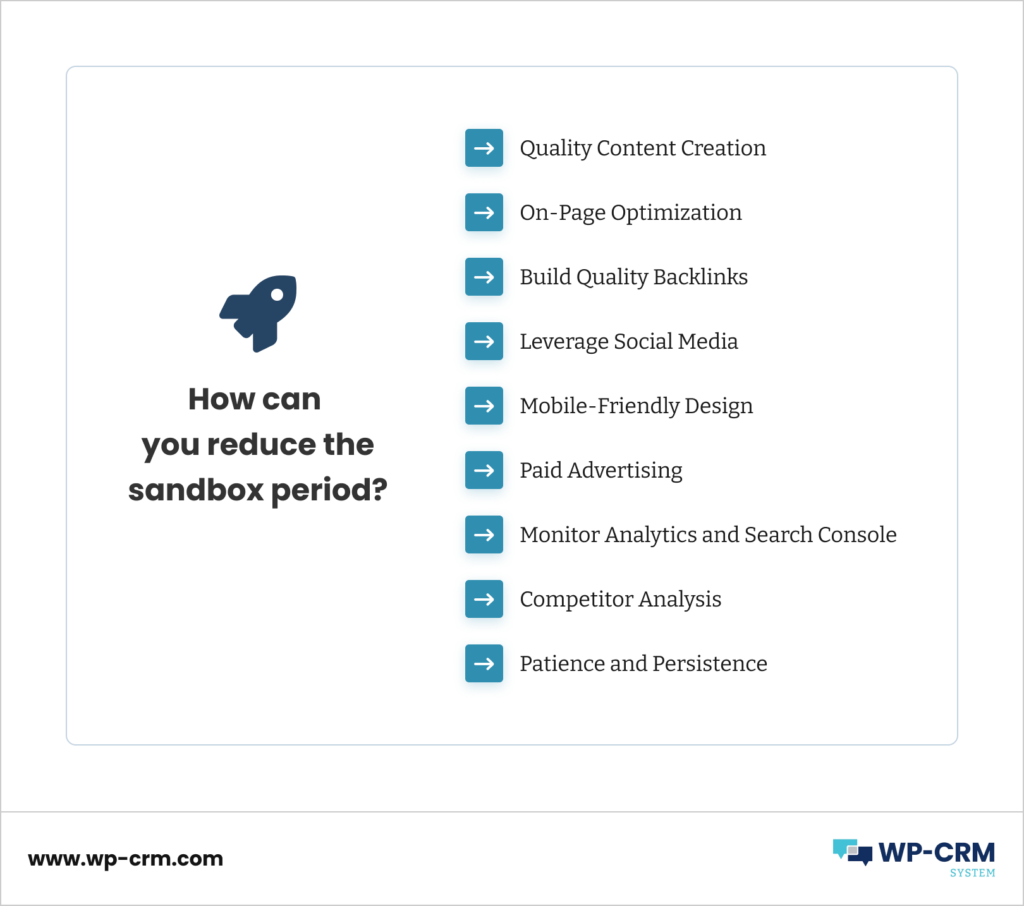How to Get Your New Site Out of Google Sandbox
Launching a new website is akin to opening the doors to a digital storefront, but the journey to prominence often begins in the enigmatic realm known as the Google Sandbox. This probationary period challenges website owners, delaying the full impact of their online presence. Understanding the intricacies of the Google Sandbox is essential for devising strategies to navigate this phase successfully.
In this article, we will unravel the mysteries of the Google Sandbox, exploring its purpose, the typical duration of confinement, and, most importantly, providing actionable insights on how to liberate your new site and accelerate its visibility in the competitive landscape of Google’s search results.
What is Google Sandbox?

The Google Sandbox serves as a probationary area within the search engine’s algorithm, specifically designed for newly launched websites. This virtual holding space is intended to evaluate and scrutinize the credibility, quality, and intentions of these fledgling sites before granting them top positions in search engine results.
The concept revolves around Google’s cautious approach to prevent the immediate success of potentially manipulative or spammy websites. During this incubation period, the site’s visibility in search results is deliberately limited, making it challenging for new websites to achieve optimal rankings.
The Sandbox is not a punitive measure but rather a preventive mechanism, ensuring that websites earn their place in the competitive realm of search results. While the duration of the stay varies, it typically lasts for a few months. This phase is crucial for website owners, presenting an opportunity to fine-tune and optimize various aspects of their sites, from content quality to SEO strategies, to prepare for enhanced visibility when released from the Sandbox.
Understanding the Sandbox is pivotal for website owners and digital marketers aiming to establish a solid foundation for their online presence. Navigating this probationary period strategically involves a comprehensive approach to website development and optimization.
How Long Does It Last?
The duration of a website’s stay in the Google Sandbox is a pivotal factor in the SEO journey of your new website. While the exact timeline is not universally defined, it typically spans a few months. The length of the Sandbox phase underscores the importance of proactive and strategic measures during this time.
How To Know If Your Site is in Google Sandbox?
Identifying whether your website is currently residing in the Google Sandbox is crucial for implementing targeted strategies to expedite its release. Several key indicators can help you ascertain if your site is undergoing this probationary phase. One prominent sign is a sudden drop in rankings shortly after the site’s launch. If your website initially appeared in search results and then experienced a noticeable decline, it could be indicative of Sandbox placement.
Monitoring your site’s indexing status is another crucial factor. If your pages are not getting indexed or have limited visibility for target keywords, it might suggest Sandbox confinement. Utilize tools like Google Search Console and analytics to assess your site’s performance and track changes in indexing over time.
Additionally, a lack of organic traffic and reduced visibility for specific queries are common indicators. If your site struggles to rank for its target keywords despite optimization efforts, it’s worth considering Sandbox implications.
How To Prevent Negative SEO Performance caused by Google Sandbox?
Escaping the Google Sandbox requires a strategic and proactive approach to prevent negative SEO performance during this crucial probationary period. While the Sandbox is a temporary phase, the impact it can have on your site’s early trajectory in search engine results is substantial. Implementing a comprehensive SEO strategy tailored to Sandbox dynamics is key to mitigating potential setbacks and positioning your website for accelerated growth once released.

1. Quality Content Creation
One of the primary considerations during the Sandbox phase is the quality of your website’s content. Google prioritizes valuable, relevant, and original content. Ensure that your pages are rich in information, free from plagiarism, and designed to meet the needs of your target audience. Regularly update and refresh your content to signal to Google that your site is active and evolving.
2. On-Page Optimization
Optimizing on-page elements is crucial for signaling to Google that your site is structured and designed for optimal user experience. Pay attention to meta titles, descriptions, header tags, and image alt text. Implementing strategic keyword placement within your content helps Google understand the relevance of your pages to specific queries.
3. Build Quality Backlinks
While the quantity of backlinks matters, the quality of these links is paramount. Focus on building high-quality, authoritative backlinks from reputable sources within your industry. A diverse and natural backlink profile signals to Google that your site is a valuable resource within its niche.
4. Leverage Social Media
Social signals are increasingly influential in SEO. Actively engage on social media platforms, sharing your content and interacting with your audience. Social signals contribute to your site’s credibility and visibility, positively influencing its performance in search engine results.
5. Mobile-Friendly Design
With the growing prevalence of mobile device usage, Google prioritizes mobile-friendly websites. Ensure that your site is responsive and provides a seamless experience across various devices. Google’s emphasis on mobile-friendliness extends to its evaluation of websites in the Sandbox.
6. Paid Advertising
Consider investing in paid advertising during the Sandbox phase to drive targeted traffic to your site. While organic growth is the long-term goal, paid advertising can provide a temporary boost, helping your site gain visibility and traffic while its organic presence develops.
7. Monitor Analytics and Search Console
Regularly monitor your website’s performance through analytics and Google Search Console. Track changes in rankings, indexing status, and user engagement metrics. Analyzing this data allows you to identify patterns, assess the impact of your strategies, and make informed adjustments.
8. Competitor Analysis
Study the strategies of competitors within your niche who have successfully navigated the Sandbox. Analyzing their approaches can provide valuable insights into effective tactics and areas where you can optimize your own strategy.
9. Patience and Persistence
Patience is crucial during the Sandbox phase. While implementing these strategies, understand that the duration of confinement varies, and results may not be immediate. Persistence in consistently applying these principles will contribute to your site’s eventual release and sustained success.
Wrapping up
In summary, liberating your new site from the Google Sandbox demands a comprehensive approach. The Sandbox, a temporary holding area for newly launched websites, requires strategic navigation to prevent negative SEO impact. Invest more efforts in quality content creation, on-page optimization, and building authoritative backlinks. Leverage social media, ensure mobile-friendly design, and consider paid advertising for temporary visibility boosts. Regularly monitor analytics, conduct competitor analysis, and exercise patience. By applying these strategies, you pave the way for your site’s successful emergence into the competitive realm of search engine results, positioning it for sustained growth and visibility.
